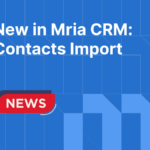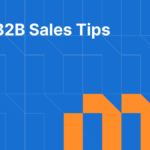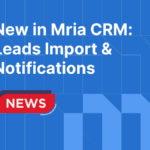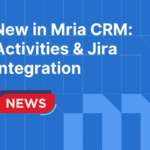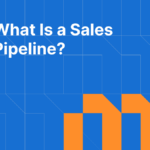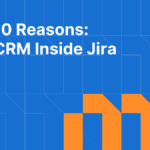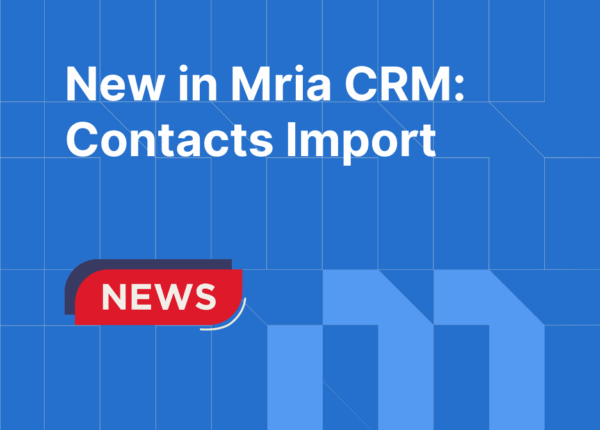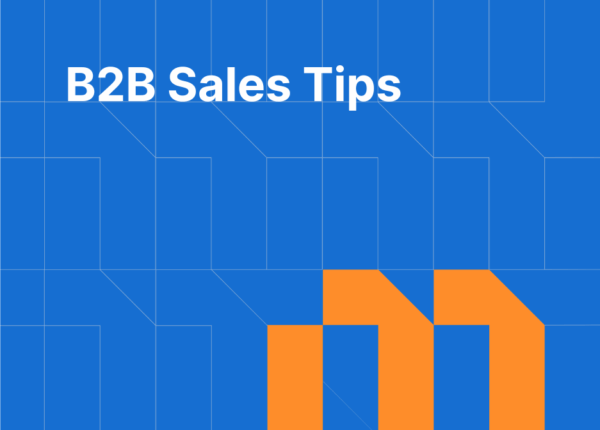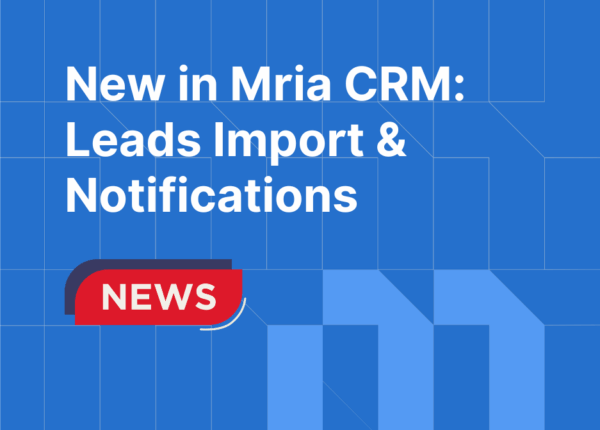Customer Relationship Management (CRM) systems have transformed significantly over the last decade. What started as tools for managing contacts and tracking sales activity has become a foundation for strategic operations across marketing, sales, product, and customer success. In 2025, CRM systems are more intelligent, more integrated, and more central to business performance than ever before.
To remain competitive, companies need to understand not only what is changing but also why it matters. This article unpacks the most critical CRM trends in 2025, focusing on the technologies, market shifts, and organizational behaviors that will shape how businesses connect with their customers in the years ahead.

Table of Contents
1. Current CRM Trends: How CRM Systems Are Changing in 2025
Modern CRM platforms are expanding their roles beyond traditional sales functions. They are becoming central to revenue operations, customer success, and cross-functional collaboration.
Unified Customer Data Platforms (CDPs)
Customer data remains the most valuable asset in CRM. Yet data fragmentation across departments remains a challenge. In 2025, leading CRM platforms are solving this through integrated Customer Data Platforms (CDPs).
Salesforce’s Data Cloud and Adobe’s Real-Time CDP are clear examples. They provide persistent IDs, real-time data ingestion, and unified customer profiles that support marketing, sales, and service simultaneously. These CDPs allow CRM users to personalize at scale, manage consent, and measure full-funnel performance with accuracy.
Without unified data, segmentation becomes unreliable and automation breaks down. CDP-backed CRMs offer clarity, accuracy, and a single source of truth that empowers better decisions.
From Pipeline Tracking to Revenue Enablement
CRM has shifted from sales-only to full revenue operations. Tools like Salesforce Revenue Cloud, Clari, and HubSpot Operations Hub help businesses track every stage of the customer lifecycle, from lead generation to retention.
By supporting forecasting, attribution, upselling, and renewal management, these CRMs enable marketing, sales, and customer success teams to collaborate on shared revenue goals. The ability to identify leakage points and optimize lifecycle metrics is now a core requirement.
CRM is no longer just a tool for closing deals. It is a platform for managing long-term revenue performance.
Workflow Automation and Suggested Actions
CRMs are becoming smarter and more proactive. Instead of relying on manual reminders or dashboards, they now surface intelligent suggestions and guide user behavior.
Platforms like Zoho CRM and Pipedrive use machine learning to recommend follow-ups, highlight high-value leads, and identify at-risk opportunities. Microsoft Dynamics 365 with Copilot AI is embedding this intelligence across the user experience.
These features reduce human error, standardize best practices, and accelerate deal velocity. In 2025, proactive CRM is not a bonus—it is an expectation.
2. CRM Technology Trends: New Technologies and Capabilities
CRM systems are rapidly evolving beyond their traditional scope. Driven by advances in artificial intelligence, natural language processing, and user experience design, the next generation of CRMs is more intelligent, intuitive, and customizable than ever before.
AI for Insight and Personalization
In 2025, artificial intelligence is no longer an enhancement but a foundational element of CRM platforms. AI is integrated across workflows to help users prioritize opportunities, tailor engagement strategies, and act with greater speed and precision.
Platforms such as Salesforce Einstein GPT and Microsoft Copilot empower users to generate context-aware follow-up emails, summarize sales calls, and forecast revenue with high confidence. These tools analyze vast amounts of behavioral and engagement data to detect buying signals, churn risk, or upsell potential in real time.
For example, a sales rep using HubSpot might receive a suggestion to re-engage a lead who has returned to the website after a long period of inactivity. The platform could generate a personalized email draft, enriched with recent activity insights, and recommend the best time to send it. This approach not only increases relevance but also frees up time for higher-value tasks.
Voice and Conversational CRM Interfaces
Conversational CRM is gaining traction as natural language processing tools become more powerful and user expectations evolve. CRM users can now interact with their systems by asking questions or giving commands, significantly lowering the barrier to data access.
With Freshworks’ Freddy AI or HubSpot’s ChatSpot, users can type or speak queries like, “What is my forecast for Q3?” or “Show me all deals at risk in the enterprise segment.” The platform responds with real-time answers, charts, or recommended actions, directly in the user interface.
This level of accessibility enables more frequent use of CRM insights by executives, field reps, and non-technical users who previously relied on dashboards built by operations teams. It also enhances mobile CRM usability, supporting on-the-go decision-making.
Real-Time Dashboards and No-Code CRM Interfaces
Traditional CRM reporting was often static, slow to update, and difficult to configure. In 2025, CRMs offer live, interactive dashboards built through drag-and-drop interfaces and visual logic builders.
Platforms like Zoho Analytics and InsightSquared allow users to filter data, pivot on metrics, and collaborate in real time. Reports can include sales activity heatmaps, lead source breakdowns, or forecast deviation alerts, all updated continuously from the CRM database.
No-code builders also allow users to create customized dashboards for specific roles or departments, from marketing to support. Instead of waiting for an admin or IT resource, team leads can generate the views they need to monitor KPIs and take immediate action.
These tools promote data literacy, transparency, and agility across the organization, making CRM data more useful and widely adopted.
3. CRM Marketing Trends: Smarter Data, Smarter Campaigns
CRM is no longer just a sales tool; it has become the foundation for modern marketing execution. In 2025, organizations are designing and delivering campaigns directly through CRM systems, using real-time data, automation, and segmentation to drive engagement across the entire customer journey.
CRM and Marketing Automation Alignment
One of the most important developments is the seamless alignment between CRM and marketing automation platforms. Previously, marketing systems and CRMs operated independently, often resulting in poor data sync and fragmented reporting. In 2025, leading platforms like HubSpot, Salesforce, and ActiveCampaign offer tightly integrated CRM and marketing tools that share data, workflows, and performance metrics.
For example, a marketing team can trigger nurture campaigns based on deal stage or service tickets, and sales can see campaign engagement history within contact records. This alignment enables personalized campaigns at scale and ensures that leads receive consistent experiences throughout the funnel.
More importantly, this integration supports closed-loop attribution. Businesses can now track campaign influence on pipeline value, win rates, and retention—all within the CRM. This transforms marketing from a cost center to a growth driver with provable ROI.
Account-Based Marketing (ABM) Within CRM
ABM has evolved into a CRM-native strategy. Rather than using separate platforms, many companies now execute ABM directly within their CRM system. Modern CRMs allow users to:
- Track engagement across multiple stakeholders at a single company
- Score accounts based on buying intent
- Create account-specific views, messaging, and dashboards
Platforms like Salesforce ABM, Demandbase, and Outreach support multi-threaded engagement strategies. Integration with LinkedIn, display ads, and email automation tools helps teams run coordinated campaigns across multiple channels.
ABM is no longer a niche strategy for enterprise sales. It is becoming a standard approach for any company with high-value, multi-person deals, and CRM is the platform where ABM strategy, execution, and measurement converge.
First-Party Data and Consent-Driven Personalization
The end of third-party cookies and increased privacy regulations are shifting the focus toward first-party data. In response, CRM systems are evolving into compliance-ready data engines that enable secure personalization.
Key CRM features supporting this include:
- Real-time behavioral tracking on websites, apps, and emails
- Consent and preference management modules
- Dynamic audience building based on customer actions
Platforms like Adobe Experience Cloud, HubSpot, and Zoho CRM are embedding GDPR and CCPA compliance features natively. These capabilities allow marketers to collect and use data transparently, with customer trust and legal safety in mind.
This trend is also encouraging companies to build more meaningful and voluntary data exchanges. Forms, preference centers, and loyalty programs are being optimized to capture richer first-party data that can power personalization, segmentation, and lifecycle marketing directly from within the CRM.
CRM is now the core of marketing execution. Organizations are centralizing campaign logic, personalization, and performance tracking in their CRM systems.
4. The Future of CRM: Strategic and Structural Shifts Ahead
The CRM landscape in 2025 is not just shaped by new features but by foundational changes in how these platforms are built, adopted, and expanded across industries and departments. Structural innovations are redefining the scope, scale, and specialization of CRM systems.
Verticalization and Industry-Specific CRMs
Organizations are increasingly adopting CRM systems designed for their specific industries. Vertical CRMs come preconfigured with the terminology, processes, and compliance frameworks needed by sectors such as legal, finance, construction, and healthcare.
For example, Clio supports law firms with integrated case management and billing workflows. Veeva Systems provides CRMs tailored for life sciences with built-in regulatory compliance and content management. Construction firms rely on platforms like Buildertrend or JobNimbus, which offer project-based views, quote management, and mobile field access.
These solutions reduce the need for custom development and shorten time-to-value. Instead of building from a blank slate, teams adopt platforms that understand their domain. This is particularly valuable for regulated or operationally complex sectors, where general-purpose CRMs often fall short.
Making CRM Part of a Larger Tech Stack
Modern businesses depend on a diverse stack of SaaS applications. In response, CRM platforms are evolving into integration-first systems that serve as data hubs.
CRM tools like Salesforce, Zoho, and HubSpot offer mature marketplaces with hundreds of native integrations. Common integrations include:
- Email and calendar systems (Google Workspace, Microsoft Outlook)
- Marketing automation (Mailchimp, ActiveCampaign)
- Customer support platforms (Zendesk, Intercom)
- Finance and billing (Stripe, QuickBooks)
- Product analytics (Mixpanel, Segment)
This shift reflects a new reality: CRM is no longer an isolated tool for one team. It is the shared foundation for collaboration across the organization.
Expansion Beyond Sales and Marketing
The value of CRM data extends far beyond traditional go-to-market teams. In 2025, CRM systems are increasingly used by product, support, finance, and operations roles to drive efficiency and insight.
- Product managers use CRM to track feature feedback and beta program engagement
- Support teams reference CRM to gain context on customer history and prioritize escalations
- Finance teams use CRM data to validate bookings and sync invoicing with revenue milestones
To enable this, CRM platforms are improving permission controls, customizable views, and role-specific dashboards. This allows companies to maintain data integrity while giving every stakeholder access to the information they need.
As CRM becomes more flexible and collaborative, it transforms into a system of engagement for the entire customer-facing organization, not just a sales pipeline tool.: What Buyers Are Prioritizing
5. CRM Software Trends: What Buyers Are Prioritizing
As CRM platforms mature, buyer expectations have become more sophisticated. In 2025, businesses are looking for solutions that are flexible, scalable, and user-centric. Purchasing decisions are being driven by usability, customization, and total cost of ownership.
User Experience and Onboarding Simplicity
A modern CRM must provide a seamless and intuitive user experience. Teams expect fast onboarding, clear navigation, and contextual help that eliminates the need for extensive training. Inline editing, responsive design, keyboard shortcuts, and customizable layouts are now standard expectations.
For example, Freshsales and Monday CRM feature simplified interfaces with guided tutorials and minimal configuration required for first-time users. Tools like Copper CRM offer native integration with Gmail, allowing users to manage contacts, pipelines, and tasks without switching tabs.
Why it matters: Adoption directly affects data quality and workflow consistency. CRMs that users enjoy working with increase productivity and reduce the risk of shadow IT solutions.
Low-Code Configuration and Flexibility
Organizations want CRMs that adapt to their processes, not the other way around. Low-code and no-code features allow teams to modify workflows, design forms, and build automations without developer support.
Salesforce Lightning Flow, Zoho Creator, and HubSpot’s Workflow Builder empower operations teams to implement changes quickly and safely. These platforms offer visual rule builders, reusable components, and branching logic for advanced automation.
Fast-moving businesses need agile systems. CRMs that support continuous iteration help companies evolve their customer engagement strategies without costly development cycles.
Flexible and Transparent Pricing Models
Pricing transparency is now a top concern for CRM buyers. Businesses are demanding predictable costs, clear feature breakdowns, and flexible plans that grow with them.
Leading CRMs now offer modular pricing by feature set, usage level, or user role. For example, Pipedrive’s pricing tiers allow small teams to start affordably while offering add-ons for email automation, reporting, or forecasting as needed.
In enterprise settings, pricing models increasingly include usage-based billing or volume discounts based on number of records, API calls, or interactions.
Businesses want to avoid vendor lock-in and overpaying for unused features. Flexible pricing ensures companies can scale their CRM investment alongside their growth.
6. What’s Driving CRM Innovation in 2025
The rapid transformation of CRM systems is driven by a combination of organizational needs, customer expectations, and emerging technologies. In 2025, three primary forces are influencing CRM development at the product and platform level.
Turning CRM Data into Actionable Insights
Data abundance is no longer the problem; actionability is. Businesses have access to more customer data than ever before, but too often it remains siloed, underutilized, or misinterpreted.
CRM platforms are now embedding analytics directly into workflows. This includes:
- Predictive lead scoring using historical performance and engagement data
- AI-generated opportunity summaries highlighting risks and deal momentum
- Automated pipeline insights that recommend follow-ups based on time decay or competitor mentions
Salesforce’s Einstein Opportunity Insights and Zoho’s Zia Assistant are good examples. These tools convert raw data into prioritized to-dos, allowing teams to focus on what will move the needle.
Intelligence embedded directly into the interface helps teams act faster and with more confidence, even without dedicated analysts.
Maintaining Identity Across Channels
With customer journeys spanning email, chat, support, product usage, and social media, it is critical for CRM platforms to unify identity across touchpoints.
Modern CRMs are integrating CDP-level identity resolution engines. Platforms like Segment Personas, Salesforce Data Cloud, and Adobe Real-Time CDP reconcile identifiers across devices, sessions, and sources to form unified customer profiles.
These profiles can include behavioral events, consent preferences, purchase history, and lifecycle stage—all updated in real time.
Accurate identity resolution underpins every other function in the CRM, from reporting to personalization. It also helps eliminate duplicate records, streamline communications, and support cross-departmental collaboration.
Personalization Without Losing Authenticity
Scalable personalization is no longer just about using a customer’s name in an email. In 2025, businesses are expected to communicate in ways that feel timely, relevant, and human—at scale.
CRMs are addressing this by blending automation with manual checkpoints. For instance:
- HubSpot’s AI Content Assistant generates drafts but encourages human review before sending
- ActiveCampaign’s journey builder supports branching paths based on behavior, allowing teams to send targeted messages while maintaining control
- Totango enables customer success teams to deliver lifecycle-based engagement without relying solely on pre-scheduled emails
The best CRM platforms support flexible, hybrid workflows that preserve the human element while scaling operational efficiency.
These innovation drivers reflect a larger shift toward systems that not only store and segment customer data but actively guide meaningful interaction throughout the customer lifecycle.
7. Business Implications: How CRM Trends Affect Different Businesses
The CRM trends reshaping 2025 are more than just technology upgrades. They signal a shift in how businesses of all sizes structure their operations, engage with customers, and plan for growth. Whether you are part of a small team, an enterprise, or a product-led startup, the practical implications of these developments vary, and understanding them is key to selecting and deploying the right CRM.
CRM for Small and Midsize Teams
Smaller teams typically need CRMs that are fast to implement, simple to maintain, and affordable to scale. In 2025, lightweight CRM platforms like Copper, Capsule, and Mria CRM for Jira are designed specifically for these users. They offer core functionality, contact management, pipeline visibility, and basic automation without the complexity or overhead of enterprise tools.
These platforms often integrate natively with productivity suites like Google Workspace or Atlassian, reducing tool fragmentation. Features like drag-and-drop pipeline views, email tracking, and mobile access enable high adoption with minimal training.
Small teams often operate without a dedicated RevOps or admin resource. Choosing a CRM that works out of the box reduces time-to-value and drives consistent customer management from day one.
CRM for Enterprises and Global Teams
Larger organizations face a different set of challenges. With distributed teams, complex permission requirements, and diverse customer segments, they need highly customizable, secure, and integrable CRMs.
Salesforce, Microsoft Dynamics 365, and SAP Sales Cloud are preferred options in this space. These platforms support internationalization, data residency compliance, multi-team segmentation, and advanced forecasting.
Enterprises are also focused on systems integration. CRMs must connect with ERP, CPQ, support, and analytics platforms, as well as enable role-based access and rigorous audit controls.
At scale, CRM becomes a governance issue as much as a workflow tool. Systems that offer control, extensibility, and reliability will outperform those that focus only on front-end user experience.
CRM for SaaS Startups and Product-Led Companies
Product-led growth (PLG) companies depend on usage data to inform sales and success motions. These companies require CRMs that ingest product behavior signals and surface intent-based triggers.
Tools like Vitally, Endgame, and Pocus integrate directly with event data to help GTM teams identify high-intent users, prioritize outreach, and align onboarding with in-app engagement. Segment and RudderStack often power the data pipelines behind these systems.
In PLG environments, timing and relevance are everything. CRMs that bridge the gap between product analytics and revenue workflows enable faster, more personalized engagement with minimal manual effort.
Understanding your organizational structure, technical resources, and customer lifecycle complexity is essential to applying these CRM trends successfully. The best CRM for your team will be the one that matches your current needs, while being ready for where you’re headed next.
Conclusion
CRM in 2025 has moved far beyond its original purpose. It is no longer a system of record limited to contact management and pipeline tracking. It has become the backbone of modern customer operations—uniting data, intelligence, and workflows across sales, marketing, product, and support.
As this article has shown, CRM platforms are now expected to support real-time collaboration, actionable insights, omnichannel personalization, and secure, scalable growth. Whether you are looking to improve lead conversion, deepen account relationships, or align teams around a shared revenue strategy, your CRM will either be your greatest asset or your biggest limitation.
To gain a strategic advantage, organizations must invest in CRM systems that:
- Integrate seamlessly with the tools your teams already use
- Adapt to your workflows, not the other way around
- Deliver intelligence where decisions are made
- Empower every department to deliver a better customer experience
The future of CRM is not about features, it is about how well it aligns with the way you work and grow. Choose a system that reflects your vision, supports your agility, and enables your people. In doing so, you will position CRM not as software, but as a long-term engine for customer-driven success.
